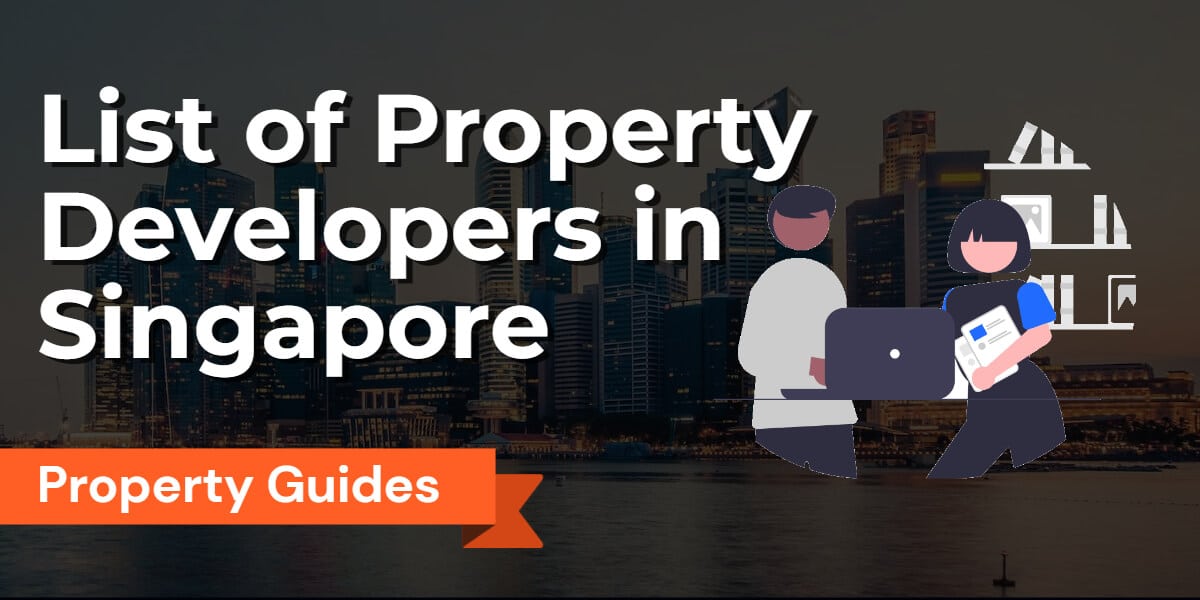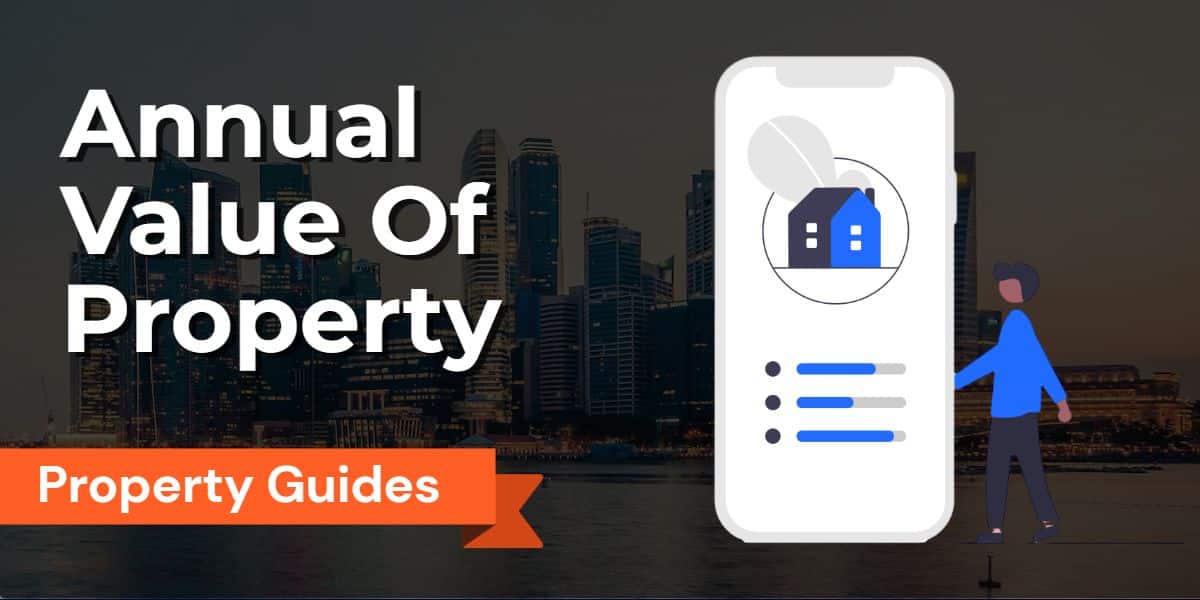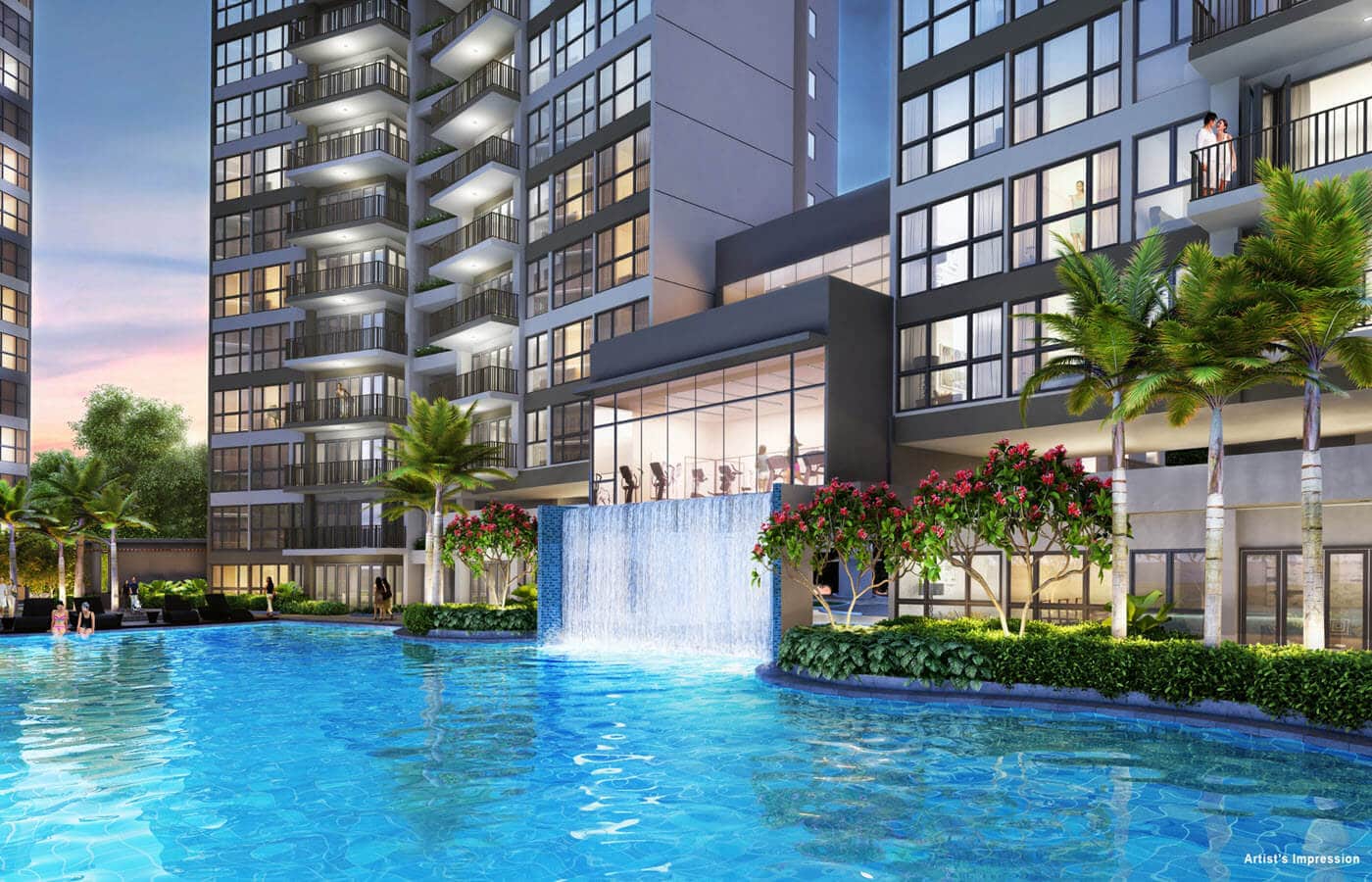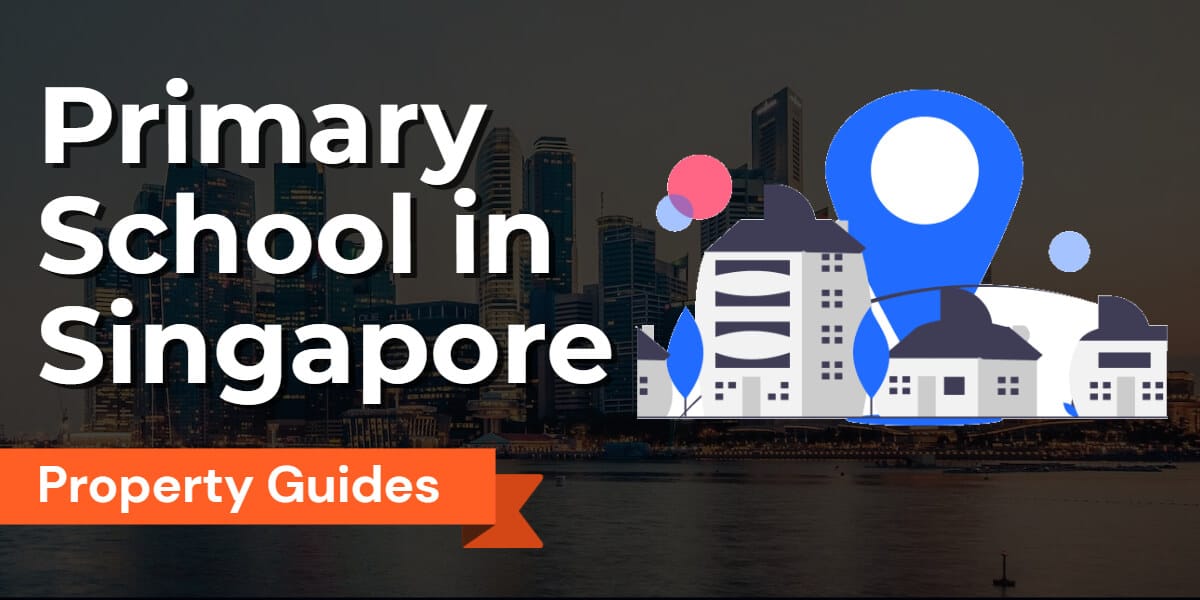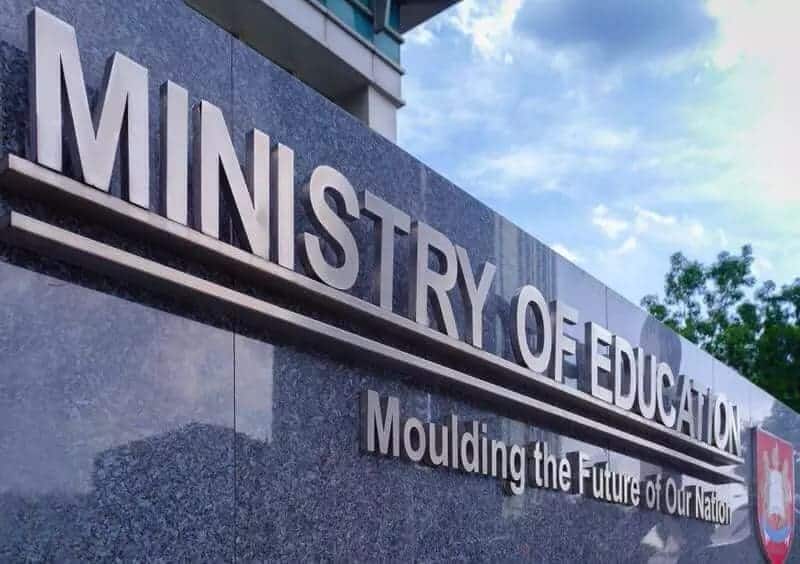
The competition for the best primary schools in Singapore is always tough and getting in can be a difficult process. Parents are often unsure of what criteria to consider when evaluating which school is the best fit for their children, not to mention how to maximize a student’s chances of admission success.
This guide will provide parents with an up-to-date overview of the best primary schools in Singapore based on ranking and assessment criteria, as well as important tips on increasing the likelihood of their child being accepted into these highly sought-after institutions.
Having this information at your fingertips will ensure that you have all the facts you need when making an informed decision about your child’s future education.
Best Primary Schools in Singapore Ranking
Choosing the best primary school for your child is an important decision. With over 186 primary schools in Singapore based on the Ministry of Education’s (MOE) list, it can be tricky to decide which one is right for your child.
| S/N | School Name | Area | Type | GEP | SAP |
| 1 | Nanyang Primary School | Bukit Timah | Co-Ed | Yes | Yes |
| 2 | Catholic High School | Bishan | Boys’ | Yes | Yes |
| 3 | Tao Nan School | Marine Parade | Co-Ed | Yes | Yes |
| 4 | Nan Hua Primary School | Clementi | Co-Ed | Yes | Yes |
| 5 | St. Hilda’s Primary School | Tampines | Co-Ed | Yes | No |
| 6 | Henry Park Primary School | Bukit Timah | Co-Ed | Yes | No |
| 7 | Anglo-Chinese School Primary | Novena | Boys’ | Yes | No |
| 8 | Raffles Girls’ Primary School | Bukit Timah | Girls’ | Yes | No |
| 9 | Pei Hwa Presbyterian Primary School | Bukit Timah | Co-Ed | No | Yes |
| 10 | CHIJ St. Nicholas Girls’ School | Ang Mo Kio | Girls’ | No | Yes |
| 11 | Rosyth School | Serangoon | Co-Ed | Yes | No |
| 12 | Kong Hwa School | Geylang | Co-Ed | No | Yes |
| 13 | Poiching School | Tampines | Co-Ed | No | Yes |
| 14 | Holy Innocents’ Primary School | Hougang | Co-Ed | No | Yes |
| 15 | Ai Thong School | Bishan | Co-Ed | No | Yes |
| 16 | Red Swastika School | Bedok | Co-Ed | No | Yes |
| 17 | Maris Stella High School | Toa Payoh | Boys’ | No | Yes |
| 18 | Rulang Primary School | Jurong West | Co-Ed | No | No |
| 19 | Pei Chun Public School | Tao Payoh | Co-Ed | No | Yes |
| 20 | Singapore Chinese Girls’ Primary | Novena | Girls’ | No | No |
| 21 | Methodist Girls’ School Primary | Bukit Timah | Girls’ | No | No |
| 22 | Hong Wen School | Kallang | Co-Ed | No | Yes |
| 23 | Mahabodhi School | Geylang | Co-Ed | No | Yes |
| 24 | Anglo-Chinese School (Junior) | Central | Boys’ | No | No |
| 25 | Fairfield Methodist School Primary | Queenstown | Co-Ed | No | No |
| 26 | Paya Lebar Methodist Girls’ School | Hougang | Girls’ | No | No |
| 27 | Radin Mas Primary School | Bukit Merah | Co-Ed | No | No |
| 28 | South View Primary School | Choa Chu Kang | Co-Ed | No | No |
| 29 | Chongfu School | Yishun | Co-Ed | No | No |
| 30 | St. Margaret’s Primary School | Central | Girls’ | No | No |
| 31 | Chongzheng Primary School | Tampines | Co-Ed | No | No |
| 32 | Punggol Primary School | Hougang | Co-Ed | No | No |
| 33 | Qifa Primary School | Clementi | Co-Ed | No | No |
| 34 | Admiralty Primary School | Woodlands | Co-Ed | No | No |
| 35 | Yangzheng Primary School | Serangoon | Co-Ed | No | No |
| 36 | Mayflower Primary School | Ang Mo Kio | Co-Ed | No | No |
| 37 | Woodlands Primary School | Woodlands | Co-Ed | No | No |
| 38 | Rivervale Primary School | Sengkang | Co-Ed | No | No |
| 39 | Bukit Panjang Primary School | Bukit Panjang | Co-Ed | No | No |
| 40 | Gongshang Primary School | Tampines | Co-Ed | No | No |
| 41 | Wellington Primary School | Sembawang | Co-Ed | No | No |
| 42 | Innova Primary School | Woodlands | Co-Ed | No | No |
| 43 | Princess Elizabeth Primary School | Bukit Batok | Co-Ed | No | No |
| 44 | Mee Toh School | Punggol | Co-Ed | No | No |
| 45 | Chij Primary (Toa Payoh) | Toa Payoh | Girls’ | No | No |
| 46 | Kheng Cheng School | Toa Payoh | Co-Ed | No | No |
| 47 | Haig Girls’ School | Geylang | Girls’ | No | No |
| 48 | Kuo Chuan Presbyterian Primary School | Bishan | Co-Ed | No | No |
| 49 | Hougang Primary School | Hougang | Co-Ed | No | No |
| 50 | Temasek Primary School | Bedok | Co-Ed | No | No |
| 51 | Anderson Primary School | Ang Mo Kio | Co-Ed | No | No |
| 52 | St. Joseph’s Institution Junior school | Novena | Boys’ | No | No |
| 53 | Shuqun Primary school | Jurong West | Co-Ed | No | No |
| 54 | Fengshan Primary School | Bedok | Co-Ed | No | No |
| 55 | CHIJ Our Lady of Nativity | Hougang | Girls’ | No | No |
| 56 | Xishan Primary School | Yishun | Co-Ed | No | No |
| 57 | Chua Chu Kang Primary School | Choa Chu Kang | Co-Ed | No | No |
| 58 | Xinmin Primary School | Hougang | Co-Ed | No | No |
| 59 | River Valley Primary School | Central | Co-Ed | No | No |
| 60 | Telok Kurau Primary School | Bedok | Co-Ed | No | No |
| 61 | Yu Neng Primary School | Bedok | Co-Ed | No | No |
| 62 | Nan Chiau Primary School | Sengkang | Co-Ed | No | No |
| 63 | Frontier Primary School | Jurong West | Co-Ed | No | No |
| 64 | Compassvale Primary School | Sengkang | Co-Ed | No | No |
| 65 | Woodgrove Primary School | Woodlands | Co-Ed | No | No |
| 66 | Xingnan Primary School | Jurong West | Co-Ed | No | No |
| 67 | Lakeside Primary School | Jurong West | Co-Ed | No | No |
| 68 | Elias Park Primary School | Pasir Ris | Co-Ed | No | No |
| 69 | Ngee Ann Primary School | Marine Parade | Co-Ed | No | No |
| 70 | Zhenghua Primary School | Bukit Panjang | Co-Ed | No | No |
| 71 | St. Andrew’s Junior School | Toa Payoh | Boys’ | No | No |
| 72 | North View Primary School | Yishun | Co-Ed | No | No |
| 73 | Westwood Primary School | Jurong West | Co-Ed | No | No |
| 74 | East Spring Primary School | Tampines | Co-Ed | No | No |
| 75 | White Sands Primary School | Pasir Ris | Co-Ed | No | No |
| 76 | St. Anthony’s Primary School | Bukit Batok | Co-Ed | No | No |
| 77 | Zhangde Primary School | Bukit Merah | Co-Ed | No | No |
| 78 | Sengkang Primary School | Sengkang | Co-Ed | No | No |
| 79 | Geylang Methodist School Primary | Geylang | Co-Ed | No | No |
| 80 | Yew Tee Primary School | Choa Chu Kang | Co-Ed | No | No |
| 81 | St. Anthony’s Canossian Primary School | Bedok | Girls’ | No | No |
| 82 | Woodlands Ring Primary School | Woodlands | Co-Ed | No | No |
| 83 | Sembawang Primary School | Sembawang | Co-Ed | No | No |
| 84 | CHIJ Our Lady of Good Council | Serangoon | Girls’ | No | No |
| 85 | Seng Kang Primary School | Sengkang | Co-Ed | No | No |
| 86 | Fernvale Primary School | Sengkang | Co-Ed | No | No |
| 87 | Pasir Ris Primary School | Pasir Ris | Co-Ed | No | No |
| 88 | Qihua Primary School | Woodlands | Co-Ed | No | No |
| 89 | Yumin Primary School | Tampines | Co-Ed | No | No |
| 90 | Concord Primary School | Choa Chu Kang | Co-Ed | No | No |
| 91 | Evergreen Primary School | Woodlands | Co-Ed | No | No |
| 92 | Tanjong Katong Primary School | Marine Parade | Co-Ed | No | No |
| 93 | Corporation Primary School | Jurong West | Co-Ed | No | No |
| 94 | Yio Chu Kang Primary School | Hougang | Co-Ed | No | No |
| 95 | Xinghua Primary School | Hougang | Co-Ed | No | No |
| 96 | Cedar Primary School | Toa Payoh | Co-Ed | No | No |
| 97 | De La Salle School | Choa Chu Kang | Co-Ed | No | No |
| 98 | Endeavour Primary School | Sembawang | Co-Ed | No | No |
| 99 | Keming Primary School | Bukit Batok | Co-Ed | No | No |
| 100 | Bendemeer Primary School | Kallang | Co-Ed | No | No |
| 101 | CHIJ (Kellock) | Bukit Merah | Girls’ | No | No |
| 102 | First Toa Payoh Primary School | Toa Payoh | Co-Ed | No | No |
| 103 | Junyuan Primary School | Tampines | Co-Ed | No | No |
| 104 | Jurong West Primary School | Jurong West | Co-Ed | No | No |
| 105 | Boon Lay Garden Primary School | Jurong West | Co-Ed | No | No |
| 106 | West View Primary School | Bukit Panjang | Co-Ed | No | No |
| 107 | Zhonghua Primary School | Serangoon | Co-Ed | No | No |
| 108 | Greenwood Primary School | Woodlands | Co-Ed | No | No |
| 109 | Tampines Primary School | Tampines | Co-Ed | No | No |
| 110 | West Grove Primary School | Jurong West | Co-Ed | No | No |
| 111 | Jing Shan Primary School | Ang Mo Kio | Co-Ed | No | No |
| 112 | Horizon Primary School | Punggol | Co-Ed | No | No |
| 113 | Edgefield Primary School | Punggol | Co-Ed | No | No |
| 114 | Kranji Primary School | Choa Chu Kang | Co-Ed | No | No |
| 115 | North Vista Primary School | Sengkang | Co-Ed | No | No |
| 116 | Pioneer Primary School | Jurong West | Co-Ed | No | No |
| 117 | New Town Primary School | Queenstown | Co-Ed | No | No |
| 118 | Gan Eng Seng Primary School | Bukit Merah | Co-Ed | No | No |
| 119 | Stamford Primary School | Central | Co-Ed | No | No |
| 120 | Marymount Convent School | Toa Payoh | Girls’ | No | No |
| 121 | Chij (Katong) Primary | Bedok | Girls’ | No | No |
| 122 | Marsling Primary School | Woodlands | Co-Ed | No | No |
| 123 | Damai Primary School | Bedok | Co-Ed | No | No |
| 124 | Yishun Primary School | Yishun | Co-Ed | No | No |
| 125 | Greendale Primary School | Punggol | Co-Ed | No | No |
| 126 | Dazhong Primary School | Bukit Batok | Co-Ed | No | No |
| 127 | Fuhua Primary School | Jurong East | Co-Ed | No | No |
| 128 | Northland Primary School | Yishun | Co-Ed | No | No |
| 129 | CHIJ Our Lady Queen of Peace | Bukit Panjang | Girls’ | No | No |
| 130 | Casuarina Primary School | Pasir Ris | Co-Ed | No | No |
| 131 | Bedok Green Primary School | Bedok | Co-Ed | No | No |
| 132 | North Spring Primary School | Seng Kang | Co-Ed | No | No |
| 133 | Yuhua Primary School | Jurong East | Co-Ed | No | No |
| 134 | Eunos Primary School | Geylang | Co-Ed | No | No |
| 135 | Tampines North Primary School | Tampines | Co-Ed | No | No |
| 136 | Canberra Primary School | Sembawang | Co-Ed | No | No |
| 137 | Guangyang Primary School | Bishan | Co-Ed | No | No |
| 138 | Peivang Primary School | Yishun | Co-Ed | No | No |
| 139 | Bukit View Primary School | Bukit Batok | Co-Ed | No | No |
| 140 | Teck Ghee Primary School | Ang Mo Kio | Co-Ed | No | No |
| 141 | Jurong Primary School | Jurong East | Co-Ed | No | No |
| 142 | Montfort Junior School | Hougang | Boys’ | No | No |
| 143 | Park View Primary School | Pasir Ris | Co-Ed | No | No |
| 144 | Beacon Primary School | Bukit Panjang | Co-Ed | No | No |
| 145 | Riverside Primary School | Woodlands | Co-Ed | No | No |
| 146 | Pei Tong Primary School | Clementi | Co-Ed | No | No |
| 147 | Naval Base Primary School | Yishun | Co-Ed | No | No |
| 148 | Alexandra Primary School | Bukit Merah | Co-Ed | No | No |
| 149 | Opera Estate Primary School | Bedok | Co-Ed | No | No |
| 150 | Canossa Catholic Primary School | Geylang | Co-Ed | No | No |
| 151 | Punggol View Primary School | Punggol | Co-Ed | No | No |
| 152 | Hua Min Primary School | Yishun | Co-Ed | No | No |
| 153 | Ahmad Ibrahim Primary School | Yishun | Co-Ed | No | No |
| 154 | St. Stephen’s School | Bedok | Boys’ | No | No |
| 155 | Punggol Green Primary School | Punggol | Co-Ed | No | No |
| 156 | Anchor Green Primary School | Seng Kang | Co-Ed | No | No |
| 157 | Ang Mo Kio Primary School | Ang Mo Kio | Co-Ed | No | No |
| 158 | Queenstown Primary School | Queenstown | Co-Ed | No | No |
| 159 | Meridian Primary School | Pasir Ris | Co-Ed | No | No |
| 160 | Greenridge Primary School | Bukit Panjang | Co-Ed | No | No |
| 161 | Clementi Primary School | Clementi | Co-Ed | No | No |
| 162 | Springdale Primary School | Sengkang | Co-Ed | No | No |
| 163 | West Spring Primary School | Bukit Panjang | Co-Ed | No | No |
| 164 | Lianhua Primary School | Bukit Batok | Co-Ed | No | No |
| 165 | Juying Primary School | Jurong West | Co-Ed | No | No |
| 166 | Fuchun Primary School | Woodlands | Co-Ed | No | No |
| 167 | Jiemin Primary School | Yishun | Co-Ed | No | No |
| 168 | Blangah Rise Primary School | Bukit Merah | Co-Ed | No | No |
| 169 | Teck Whye Primary School | Choa Chu Kang | Co-Ed | No | No |
| 170 | Bukit Timah Primary School | Bukit Timah | Co-Ed | No | No |
| 171 | Angsana Primary School | Tampines | Co-Ed | No | No |
| 172 | Unity Primary School | Choa Chu Kang | Co-Ed | No | No |
| 173 | Townsville Primary School | Ang Mo Kio | Co-Ed | No | No |
| 174 | Farrer Park Primary School | Kallang | Co-Ed | No | No |
| 175 | Palmview Primary School | Sengkang | Co-Ed | No | No |
| 176 | Waterway Primary School | Punggol | Co-Ed | No | No |
| 177 | Changkat Primary School | Tampines | Co-Ed | No | No |
| 178 | Oasis Primary School | Punggol | Co-Ed | No | No |
| 179 | Fern Green Primary School | Sengkang | Co-Ed | No | No |
| 180 | St. Gabriel’s Primary School | Serangoon | Boys’ | No | No |
| 181 | Si Ling Primary School | Woodlands | Co-Ed | No | No |
| 182 | Cantonment Primary School | Bukit Merah | Co-Ed | No | No |
| 183 | Punggol Cove Primary School | Punggol | Co-Ed | No | No |
| 184 | Valour Primary School | Punggol | Co-Ed | No | No |
| 185 | Northoaks Primary School | Sembawang | Co-Ed | No | No |
| 186 | Northshore Primary School | Punggol | Co-Ed | No | No |
Fortunately, you can refer to our ranking list of the top 20 Primary Schools in Singapore and choose the best Primary School for your child.
Our list is based on a variety of criteria such as academic excellence, quality of education, fee structure, and subjects offered by various schools in Singapore.
This ranking takes into account many factors including data from MOE as well as feedback from parents who believe their children had a good learning environment while attending these schools.
It also includes co-ed, single-sex, and Gifted Education Programme (GEP) schools so that you can select the right one for your needs.
Top 10 Primary Schools In Singapore
Choosing the right school for your child is no easy task. With 186 primary schools in Singapore based on rankings, it is important to choose the best primary school that fits your child’s education needs.
To help you narrow down your choices, we have compiled a list of the top 10 primary schools in Singapore based on student performances and feedback from parents.
At the top of our ranking list is one of Singapore’s oldest government-aided schools – Anglo-Chinese School (Primary).
Located along Bukit Timah Road, this co-ed school offers GEP (Gifted Education Programme) as well as Special Assistance Plan for students to enter their secondary school.
Following close behind are Pei Hwa Presbyterian Primary School, Henry Park Primary School, and Methodist Girls’ Primary School respectively.
Many other schools offer programs such as Maths Olympiad or National School Games that are geared towards academic excellence while others provide quality learning environments with small class sizes or tuition fees subsidies.
It ultimately comes down to selecting the right one to fit your needs and preferences such as single-sex or co-ed; fee structure; subjects such as English and Mother Tongue Languages offered; etc.
Do note that the majority of primary schools follow MOE National Syllabus but some specialized independent schools are allowed to set their own curriculum based on different communities’ beliefs about education for every child – so make sure you look out for those differences too!
Tips To Get Into Primary Schools In Singapore
Choosing the right primary school for your child can be a daunting task. With 186 Primary Schools in Singapore based on the Ministry of Education’s (MOE) guidelines, parents have to take into consideration different factors such as ranking, location, co-ed or single-sex classes, and fee structure when selecting the best primary school for their child.
It is important to note that many schools offer special assistance plans targeted towards students from less privileged backgrounds but also academically gifted students.
Additionally, many schools follow the National syllabus with additional specialized subjects such as Math/English/Mother Tongue offered outside of curriculum hours.
Parents should also consider class sizes; most government-aided schools usually have larger class sizes than private independent schools which may have smaller classrooms thus allowing more individualized attention to each student.
When it comes to choosing the best primary school in Singapore, it is best advised that you take into consideration multiple factors before deciding which one would be best suited for your child’s education.
It is wise to visit each school open house and find out more about their tuition fees, academic excellence, and quality of learning environment before making a decision about which one you would like your child to go to!
Plan Early
When it comes to getting your child into the best primary schools in Singapore, planning early is essential. Most top primary schools begin accepting applications up to a year prior to admission, so start researching and making connections as soon as you can.
You’ll need time to properly explore the options available and decide which school will be best for your child’s education.
Additionally, many schools usually require that you attend open houses and pass entrance exams, so be sure to take those into consideration when planning out the process.
Attend School Open Houses
Attending an open house can be a great way to get a better idea of what the primary school is like and how it operates. It gives you the opportunity to meet teachers and staff, talk to other parents, and see the facilities first-hand.
Many schools also hold presentations about their programs, academic standards, and activities for prospective students.
Open houses are usually conducted during weekends or holidays so that more parents can attend them. Be sure to find out when your preferred school will be holding its open house so that you don’t miss out!
Make Connections
When it comes to choosing the best primary school for your child, making connections with people who are knowledgeable and experienced in the field can be extremely helpful.
Connecting with alumni, teachers or members of the school board can provide valuable insights about different schools and their offerings.
These connections can give you an inside look into a school’s culture and environment, which is something that a ranking list may not necessarily provide.
They will also help you understand if a particular school’s curriculum and values fit in with your child’s learning style and interests.
Additionally, speaking to current parents at various schools might give you an idea of what kind of extra-curricular activities they have on offer as well as their fee structures – both of which are important factors when selecting a primary school for your child.
Prepare For Exam
Preparing for the examination is an important part of getting into primary schools in Singapore. The Primary School Leaving Examination (PSLE) is a standardized exam administered by the Ministry of Education (MOE) to Singapore citizens and Permanent Residents.
It is taken at the end of their primary school education, typically after 6 years of study.
In order to prepare for this exam, students should familiarize themselves with the national curriculum and syllabus. Math and English are two important core subjects that students need to be proficient in before attempting the PSLE.
Students can also benefit from private tuition or enrolling in extra-curricular activities such as English enrichment programs or maths tutorials catered specifically for PSLE preparation.
Parents who believe in academic excellence may also wish to research schools that offer special assistance plans such as the Gifted Education Programme (GEP).
This program is geared towards providing an enriched learning environment for those who excel academically, allowing them to reach greater heights
Familiarise Yourself With the School
Before you decide to apply for a primary school in Singapore, it is important to familiarise yourself with the school’s environment, culture, and curriculum.
Research the different primary schools in Singapore and make sure that they offer the right learning environment and resources for your child’s education.
Find out what the school offers – from its syllabus to other activities such as performing arts or sports academies.
Learn about their tuition fee structure, class sizes, student population composition, facilities, and any special programs or awards associated with them.
Doing so will help you select the right one for your child that best fits their needs.
Don’t be afraid to appeal or request
Appealing or requesting to get your child into the primary school of your choice is an option, and it doesn’t necessarily mean that you don’t have faith in your child’s abilities.
It simply means that there is a multitude of factors at play when it comes to choosing the right school for them – location, fees, curriculum, environment, etc.
The Ministry of Education allows parents to appeal for their children to be admitted into the primary school they desire if they meet certain criteria such as those related to academic results and residence duration.
Parents may also request for their children to join a Primary 1 class of a different language stream or subject-based banding program in some schools.
Do check out the MOE website for more information on these criteria and what you need to do should you decide to appeal or request admission into a particular primary school.
Research Well
When it comes to choosing the best primary school for your child in Singapore, research is key. Look into school rankings and what makes a particular school stand out from other options.
Here are some of the factors you should consider when researching: 186 Primary Schools in Singapore are based on their academic performance, mother-tongue languages offered, fee structure, subjects such as English and Math they offer as part of the national syllabus, class sizes, tuition fees (if any) and special assistance programs like Gifted Education Programme (GEP) or Special Assistance Plan (SAP).
You can also look at MOE’s ranking list to get an idea of how schools compare against each other.
It’s important to note that many schools offer more than just academics – they follow different curriculums which may be geared towards helping students learn even beyond their classrooms.
Additionally, many schools have CCAs catered towards different communities and interests so you’ll want to select the right one for your child’s education needs and interests!
The 30 months stay requirement
When it comes to selecting a primary school in Singapore, one of the most important factors to consider is the 30-month stay requirement set by the Ministry of Education (MOE).
This rule states that children whose parents are not Singapore citizens or permanent residents, must have resided in Singapore for at least 30 months before enrolling in any primary/secondary school.
This means that if you are planning on sending your child to a primary school in Singapore, you will need to plan early and ensure that your child meets this criterion.
It should also be noted that while MOE sets this requirement as a general guideline, some schools may require the student to meet even stricter criteria on their own admission policies.
Therefore, it is important to do ample research so as not to miss out on any opportunities or inadvertently fail eligibility criteria.
GEP Primary School Ranking
When it comes to choosing the best primary school for your child, one of the most important factors to consider is its ranking.
Here in Singapore, there are 186 primary schools – government and government-aided schools – that you can choose from. In this section, we will take a look at the GEP Primary School Ranking and how it might help you choose the best primary school for your child.
The Gifted Education Programme (GEP) is an enrichment program offered by some of Singapore’s top primary schools that are geared towards academically able students who have extraordinary potential or talents in higher-order thinking skills, such as Maths or Science.
These schools usually require students to sit for tests or interviews during the Primary 1 registration process before they can be enrolled in their GEP programs.
To identify which of these top-performing schools offer this program and rank them against each other based on educational resources available, student-teacher ratio, quality of education, and overall performance among many other criteria.
We have put together this list featuring some of Singapore’s leading primary schools that offer GEP programs:
- Raffles Girls’ Primary School
- Henry Park Primary School
- Methodist Girls’ School (Primary)
- Nanyang Primary School
- Tao NanSchool
- CHIJ (Kellock) – St Hilda’s Primary Schoool
This list serves only as a guide so do ensure to do your research on each individual school when making a decision.
Best Primary Schools in Singapore by Attribute
When it comes to choosing the right primary school for your child, there are many factors to consider.
One of the key aspects is the type of school – whether you go for a government-aided or government school, as well as co-ed or single-sex schools.
In Singapore, there are 186 primary schools in total with a variety of options available.
The majority of primary schools in Singapore are co-ed; some offer specialized independent schools and others follow a national syllabus geared towards particular communities like Chinese, Malay, and Indian.
These schools usually have different fee structures depending on their academic excellence and the quality of education offered.
Most parents who believe in providing their children with the best possible education opt for a fee structure that suits their budget yet provides them with adequate resources and a learning environment that is necessary for their child’s development academically.
Apart from tuition fees, these top 20 primary schools also offer subjects such as English Language, Mathematics, and Mother Tongue Languages, etc., which allows students to enter into Phase 2A or Phase 2B streams during the Primary 1 registration process according to PSLE scores attained by them during Primary School Leaving Examination (PSLE).
Boys
Choosing the right primary school for your son can be a tricky decision.
There are 186 primary schools in Singapore based on ethnicity, location, and other criteria that parents need to consider when choosing the best primary school for their child.
The majority of these primary schools have co-ed classes, which means boys and girls learn together in the same class.
However, some schools offer single-sex options so you can choose a co-ed or gender-specific education program for your son.
The Ministry of Education (MOE) has ranked all the available primary schools based on student performance in national examinations such as The Primary School Leaving Examination (PSLE).
This ranking list is updated every year and helps parents select the right one for their sons. Schools usually follow either the National syllabus or the International Baccalaureate curriculum and specialize in subjects such as English language arts, Maths and Science.
MOE also evaluates each school’s academic excellence through its annual Academic Excellence Awards while incorporating other factors like Co-Curricular Activities (CCAs) into its rating system. Schools that offer quality education backed by excellent accomplishments are eligible to receive awards like School Excellence Award (SEA), School Distinction Award (SDA), Best Practice Award (BPA), and Outstanding Development Award(ODA).
Girls
When it comes to primary schools in Singapore, there are 186 of them that cater to girls specifically. These schools are spread across the country and come in all shapes and sizes, catering to the different communities they serve.
The Ministry of Education (MOE) places a great emphasis on excellence when it comes to primary education for female students, with many schools offering special assistance programs geared towards helping girls excel academically. For parents who believe their daughters can benefit from single-sex education environments, these girls’ schools might be just what they’re looking for.
These primary schools usually follow the national syllabus and offer subjects such as English language, Mathematics, and Mother Tongue Languages at Primary 1 level. They also vary in terms of tuition fees but most follow MOE’s guidelines on fees which allows them to set reasonable fee structures while still aiming at providing quality education for all students regardless of background.
As an added bonus, some of these girls’ primary schools have been highly ranked by various rankings lists over the years – Pei Hwa Presbyterian Primary School was recently ranked 2nd in the top 20 list by The Straits Times!
How Do We Calculate Rankings?
We assign overall rankings to primary schools based on various criteria such as academic performance, tuition fees, school facilities, and more. We also look at the performance of a given school in comparison to other schools in its cohort.
We examine the different attributes that make a primary school unique such as mother-tongue languages taught and extracurricular activities offered.
We also consider factors such as class sizes, fee structure, and any special programs available in each school when calculating our rankings. In addition to this, we take into account feedback from parents who have sent their children to these schools.
Finally, we evaluate each primary school’s curriculum against the national syllabus which is formulated by the Ministry of Education (MOE).
Our ranking system is designed to provide a comprehensive picture of each primary school so that parents can make an informed decision when choosing the best one for their child’s education needs.
Subjects Offered in Primary Schools in Singapore
When it comes to selecting a primary school for your child in Singapore, the Ministry of Education (MOE) provides 186 primary schools all over the country.
Each school offers different programs that are geared toward academic excellence and may provide special assistance plans such as Gifted Education Programme (GEP), Special Assistance Plan (SAP), or North-East National Syllabus (NENs).
With so many options to choose from, parents often struggle when it comes to choosing the best primary school for their child’s education.
To make things easier, here’s an overview of the different types of primary schools in Singapore and their respective rankings:
Understanding Primary School Costs
When considering primary schools in Singapore, it is important to understand the cost of attending one.
The majority of primary schools in Singapore are government-aided, with 186 primary schools based on a national syllabus.
While some government-aided and specialized independent schools may require tuition fees for admission, most follow the Ministry of Education’s (MOE) framework for fees.
For a government school, the fee structure is as stated below:
- Singapore citizens: $25 to $43 per month.
- Permanent Residents: $400 to $418 per month.
- International Students: $800 to $1,488 per month.
Generally speaking, MOE provides different fee structures for students depending on their citizenship status – Singapore Citizens (SCs), Permanent Residents (PRs), or non-residents – as well as their family’s income.
For example, SCs who come from families earning lower incomes can expect to pay a smaller amount than those coming from higher-income households.
On the other hand, PR and non-resident students incur additional tuition fees that differ depending on each school’s policy.
It is also worth noting that there are many schools that offer free tuition or subsidized rates when it comes to subjects such as English and Mother Tongue Languages (e.g. Chinese/Malay/Hindi).
Additionally, certain private tuition services may be offered at an additional cost per subject or term basis which could affect your overall budget when selecting a primary school for your child’s education in Singapore.
Primary School MOE Awards
The Ministry of Education (MOE) assesses the performance of all 186 primary schools in Singapore based on various criteria to provide parents with an overall ranking list that can be used to compare different schools.
The MOE also awards special distinctions like the School Excellence Award (SEA), School Distinction Award (SDA), Best Practice Award (BPA), and Outstanding Development Award (ODA).
These awards are conferred to recognize good practice in teaching and learning processes, as well as improvement in students’ academic performance or other non-academic areas like co-curricular activities.
These rankings from MOE will help you select the right one for your child among these many schools that offer a variety of programs such as the Gifted Education Programme (GEP) and Special Assistance Plan(SAP) etc.,
School Excellence Award (SEA)
The School Excellence Award (SEA) is an annual award given by the Ministry of Education (MOE) to recognize primary schools in Singapore that have achieved excellence in both their academic and non-academic programs.
It is designed to promote holistic education and a culture of achievement among students. Schools are judged based on criteria such as examination results, co-curricular activities, leadership and citizenship programs, student care initiatives, and overall school performance.
The SEA aims to encourage schools to pursue excellence in all aspects of education so that students can develop holistically.
This includes helping them acquire the necessary knowledge and skills for life beyond academics, as well as developing character traits like resilience, self-confidence, and compassion.
Schools that excel in these areas may be eligible for up to four awards each year – Platinum Academic Excellence Award (PAEA), Gold Academic Achievement Award (GAAA), Silver Non-Academic Achievement Award (SNAA), or Bronze Leadership & Service Recognition Award (LSRA).
School Distinction Award (SDA)
The School Distinction Award (SDA) is a prestigious accolade conferred by the Ministry of Education (MOE) to recognize 186 primary schools in Singapore based on their achievements in academic excellence, quality of education, and promoting holistic student development.
To be eligible for the SDA award, schools must demonstrate high performance in at least three out of five areas: pupil’s aptitude and abilities; Student Outcome Measures such as PSLE results; students’ commitment to learning; strength of staff engagement with students and parents; and promotion of co-curricular activities.
The school must also offer an enriched curriculum with specialized programs such as GEP or Special Assistance Plan beyond that offered by the national syllabus, have strong mother-tongue language provision for bilingualism, practice social inclusion that celebrates diversity from different communities, set high behavioral expectations from their students, cultivate character building through service learning initiatives or leadership opportunities, etc.
Besides this criterion which MOE looks at when awarding SDAs to primary schools in Singapore – fee structure is also taken into consideration.
In most cases where fees are collected by government-aided schools (GAS), they are allowed to set variable tuition fees but charged no more than 30% above average fee levels depending on family income levels.
Private Primary Schools usually charge significantly higher tuition fees than GASs due to smaller class sizes and additional subjects such as English language enrichment being provided.
Best Practice Award (BPA)
The Best Practice Award (BPA) is a prestigious accolade given by the Ministry of Education (MOE) to recognize excellence in primary schools in Singapore.
It honors exceptional schools that have implemented best practices to maximize learning outcomes and promote holistic development for their students.
The BPA recognizes 186 primary schools in Singapore based on six criteria: academic excellence, quality of education and instruction, holistic student development, innovative use of technology, community engagement and outreach, and school culture and leadership.
Outstanding Development Award (ODA)
The Ministry of Education (MOE) introduced the Outstanding Development Award (ODA) in 2013 to recognize primary schools that have implemented outstanding development strategies and initiatives.
These strategies focus on holistic and comprehensive education, personal development, leadership capacity building, teaching and learning excellence, as well as special needs support.
To be eligible for the award, a school must show significant improvement across all aspects of student development – academic performance, intellectual stimulation, and enrichment activities such as sports and aesthetics programs.
The school must also be able to demonstrate success in providing a vibrant yet safe learning environment where every child is given an opportunity to excel according to his or her own abilities.
The ODA is awarded based on yearly reviews conducted by MOE’s School Excellence branch. Schools that have consistently demonstrated excellent results over several years can apply for the award upon completion of each review cycle.
MOE Primary One Registration: How Does It Work?
Singapore’s Ministry Of Education (MOE) is responsible for the registration of Primary One students in the 186 primary schools located in Singapore.
This process usually takes place in two phases, with Phase 2A taking place in February and Phase 2B taking place between April and May.
Once you have identified a list of potential schools based on your child’s needs, it’s time to register them.
Parents must provide proof that their children are either Singapore Citizens or Permanent Residents as well as documents relating to their address when registering for primary school education.
The registration process also requires parents to attend an interview session, during which they will be asked questions about their family background, educational qualifications, and aspirations for their child’s education.
After this session, parents will be informed if they have been successful in gaining a spot at the chosen school or not.
Conclusion
Singapore is known for its highly competitive education system, and parents often prioritize their children’s education.
Choosing a primary school can be a daunting task, but understanding what top schools offer can help make the decision easier.
Top primary schools in Singapore are equipped to handle students with learning disabilities or special needs.
They provide resources such as specialized teachers, therapy sessions, and accommodations to support these students’ learning.
The average class size in these schools ranges from 25-30 students per classroom, allowing for individualized attention.
Bilingual education is also emphasized in top primary schools in Singapore.
Students learn English and one other language such as Chinese or Malay from an early age. Admission requirements vary between schools but include academic performance, extracurricular activities, and interviews.
In addition to academics, top primary schools in Singapore focus on social and emotional development through programs that emphasize character-building and leadership skills.
One interesting statistic is that many of these schools have student-led initiatives such as eco-clubs or community service projects that encourage civic engagement among young learners.
Overall, choosing a top primary school in Singapore means selecting an institution committed to providing a holistic education that prioritizes both academic excellence and personal growth.
Frequently Asked Questions
How Do Primary Schools In Singapore Handle Students With Learning Disabilities Or Special Needs?
Students with learning disabilities or special needs are provided support in primary schools throughout Singapore.
The Ministry of Education has implemented a comprehensive framework for inclusive education, which ensures that students with diverse needs receive equal opportunities to learn and succeed.
Primary schools provide various forms of support such as early identification, assessment, intervention, and accommodations to help these students cope with their difficulties.
For instance, teachers may modify teaching strategies or provide assistive technology tools to facilitate the learning process.
In addition, collaboration between teachers, parents, and specialists is encouraged to ensure that the student's academic and emotional well-being are taken care of.
Overall, primary schools in Singapore strive to create an environment where all students can feel supported and valued regardless of their abilities.
What Is The Average Class Size In Top Primary Schools In Singapore?
The average class size in primary schools is a topic of concern for both parents and educators alike. The number of students in a classroom can significantly impact the quality of instruction, individualized attention, and overall learning experience.
While there are variations between different schools and countries, research suggests that smaller classes tend to lead to better academic outcomes.
In Singapore, the Ministry of Education recommends an ideal class size of 25 students or fewer for primary schools. However, it's worth noting that this recommendation is not always feasible due to factors such as limited space and resources.
Despite these challenges, many top primary schools in Singapore strive to maintain small class sizes through various measures such as teacher-student ratios and innovative teaching methods.
Do Top Primary Schools In Singapore Offer Bilingual Education?
Bilingual education refers to the teaching of two languages in a coordinated manner. This approach is designed to enable learners to become competent speakers and writers in both languages.
Many primary schools around the world have adopted bilingual education as part of their curriculum, with some offering immersion programs where students are taught entirely in a second language.
While it varies from school to school, top primary schools typically place great emphasis on language learning and may offer bilingual education options for students who wish to learn more than one language concurrently.
These programs can be beneficial not only for academic achievement but also for cultural understanding and overall cognitive development.
What Are The Admission Requirements For Top Primary Schools In Singapore?
Admission requirements for primary schools in Singapore vary depending on the type of school, with some having more stringent criteria than others.
Generally speaking, students are required to be Singapore citizens or Permanent Residents, as well as meet age requirements and pass a qualifying examination.
Some schools may also require additional assessments such as interviews or written tests to determine a student's suitability for admission.
Other factors that may be taken into consideration include proximity to the school, sibling priority, and academic performance in previous years.
It is important for parents and guardians to research individual schools' admission policies before applying to ensure they meet the necessary requirements.
How Do Top Primary Schools In Singapore Support The Social And Emotional Development Of Their Students?
The promotion of social and emotional development is an essential aspect of education that prepares students for success in life.
Top primary schools employ various strategies to support the social and emotional growth of their students, including:
- Establishing a positive school culture
- Developing strong relationships between teachers and students
- Fostering peer interaction and collaboration through group projects and activities
- Providing counseling services
- Offering character education programs that emphasize values such as respect, responsibility, honesty, fairness, empathy, and perseverance.
These approaches help students develop self-awareness, self-management skills, social awareness, relationship skills, and responsible decision-making abilities that will benefit them throughout their lifetime.












